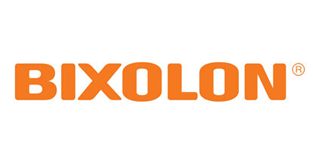Digitization has dramatically affected nearly every aspect of the business world, but despite the advantages digital technologies offer, many organizations still find themselves struggling to transition from paper-based to digitized operations.
According to Gartner, “more than 50% of organizations have not yet actively started to build a roadmap for supply chain digital transformation.” To remain highly competitive, businesses must keep pace as the world moves increasingly toward automation.
This is especially true for supply chain operations where end-to-end visibility delivers unparalleled value in production, inventory management and product fulfillment. By updating systems and digitizing your supply chain, you will better equip your business for present needs and future demands.
Digitizing supply chains can involve a range of changes, from using labels and sensors to track supplies, inventory and resources in real-time to automating nearly the entire supply chain operation. Ideally, things like product labels and shipping labels are the only paper to be found in a digitized supply chain. By forgoing a manually managed supply chain, companies can increase efficiency and visibility while maximizing revenue.
How does Digitization Benefit the Supply Chain?

Supply chain digitization is necessary in the modern world. These are the key benefits to bringing your supply chain into the digital age:
Improve Communication and Visibility
A digitized supply chain eliminates blind spots and improves communication and visibility by offering insight into where any given product is at any point in the supply chain. Visibility is increasingly important to ensure an organization’s internal operations align with its partners.
Supply chain transparency extends across organizations, as well as manufacturers, vendors, warehouses, logistics and distribution centers and customers. By having visibility from the beginning to the end of the supply chain, organizations can deliver better customer experiences, greater operational efficiency and improved profitability.
Increase Efficiency
Digitization directly creates efficiencies across the entire supply chain. In a paper-based supply chain, orders pass through many hands, oftentimes requiring documentation and creating the potential for error with every human touchpoint. In a digitized supply chain, improved data accuracy removes the need for manual re-keying of errors.
With a well-planned digitization project, most manual processes can be streamlined, if not completely eliminated. Supply tracking, for instance, will not require manual counting and documentation, but rather quick scans or even the use of sensors. The elimination of labor-intensive processes results in improved speed and increased efficiency.
All things Data for Supply Chain Analytics
Data gathering, analytics and reporting can be accomplished with much greater efficiency in the digitized supply chain. Advantages go beyond instant data collection. Data analysis in a paper-based supply chain can be bogged down in the inefficiencies of collecting the data.
It’s this data collection and gathering that helps companies save time, money and resources. The data identifies fluctuations in demand, predicts when supplies might be scarce, and provides unique insights that can help maintain supply chain velocity.
More Room for Collaboration

Supply chain digitization is a conduit for seamless collaboration between suppliers, manufacturers, logistics providers and throughout the supply chain. Free-flowing information accelerates collaboration with everyone involved. This collaboration helps save time and money for all as well as improves responsiveness and helps protect from any possible disruptions.
Reduce Cost
In a manually managed supply chain, the cost of paper alone can be burdensome. Supply chain digitization reduces these recurring costs by making the need for them obsolete. The Auto-ID technology required for digital supply chain management requires an upfront investment, but it is repaid in cost savings and new efficiencies in the long run.
Digitizing supply chains also results in more accurate ordering and spending. With the data collected, there is a more precise idea of the quantity of supply needed at any given time. This information allows for a more rapidly moving supply chain which means less capital is tied up in the supply chain.
Interoperability
With paper-based supply chains, it’s difficult to track products within an organization’s facility. It becomes even more difficult to track products after they enter another location. Supply chain digitization enhances interoperability, allowing for a single data management source across multiple parties. Rather than losing tracking capabilities, product visibility is maintained no matter the stage or location.
The Future of Supply Chain
Supply chain 4.0 delivers strong benefits to companies through automated technology, advanced robotics and big data analytics that drive rapid innovation and changes regularly. On the surface, supply chain 4.0 may appear to require a human-less and completely automated supply chain. However, experts agree that this is not the case. Instead, as we move toward Industry 5.0, the technology will be deeply integrated with human input to provide mass customization and personalization that caters to customer demand. Supply chains will aim to merge benefits from both machines and humans for the best performance results.
Article Credit – https://www.seagullscientific.com/resources/blog/the-benefits-of-digitizing-your-paper-based-supply-chain/



























